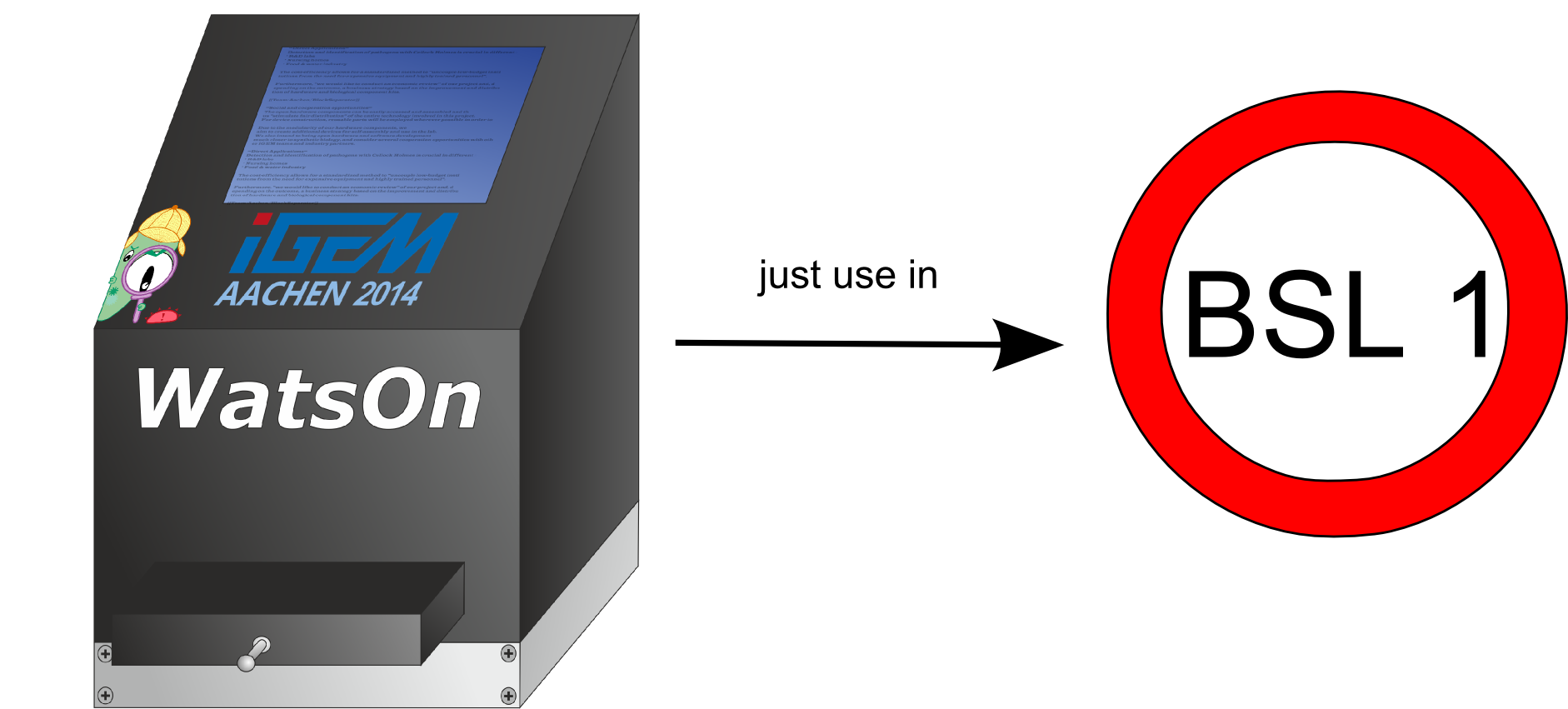Team:Aachen/Safety
From 2014.igem.org
(→Biosafety) |
(→Safety) |
||
| (34 intermediate revisions not shown) | |||
| Line 2: | Line 2: | ||
{{Team:Aachen/Header}} | {{Team:Aachen/Header}} | ||
| - | + | [[File:Aachen_14-10-13_Pathogen_Cell_iNB.png|right|150px]] | |
| - | + | = Safety = | |
| + | Our iGEM team is committed to consider all aspects of the entire project, especially biosafety. For this project, two biosafety aspects have to be covered. On the one hand, we are using ''E. coli'' as '''genetically modified organism''', and on the other hand, we are detecting ''Pseudomonas aeruginosa'', an '''opportunistic human pathogen'''. It infects people suffering from cystic fibrosis or immunodeficiency as well as severe burns or open wounds. When sampling ''P. aeruginosa'', we should prevent proliferation and spread of the bacterium. For ''E. coli'', we have to take care of biological containment of a genetically modified organism. | ||
| - | + | In general, we developed and designed the measurement device as '''closed system''' for a better safety handling. This way, neither the sampled pathogens nor the genetically modified sensor cells can escape our biosensor unit. For the detection, we are using one-time usage sampling and sensor chips which can be disposed of after '''autoclaving or irradation''' with strong UV light. Moreover, the electronic components are in a separate compartment and inaccessible for the user, preventing electric shock or other injuries. | |
| - | + | <center> | |
| - | + | {{Team:Aachen/Figure|Aachen_Security_WatsOn.png|title=Biosafety level for ''WatsOn''|subtitle=Don't forget to use ''WatsOn'' only in laboratoris with the biosafty standard 1|width=500px}} | |
| - | + | </center> | |
| - | + | ||
| + | To detect ''P. aeruginosa'', a sampling agar chip is slightly pressed against the solid surface to be tested. This sampling chip is put on the sensor chip and both are placed in a petri dish which is closed thoroughly. Thereby, the cells have no contact with the device during or after the measurement. However, the sensor chips must be handled in '''S1 environments only''' since they contain genetically modified ''E. coli''. Afterwards, both chips can be autoclaved and disposed. The whole lining of the measurement device is built from plastic so that it can be disinfected easily. | ||
| + | <!-- Afterwards, the sampling chip is immediately introduced into our measurement device and will not be removed until the detection is finished and the chips have been disinfected. The sensor chips must be handled in '''S1 environments only''' since they contain genetically modified ''E. coli''. However, once introduced into the measurement device, the sensor chips, too, will not be removed before disinfection. The living cells inside the measurement device are effectively killed after a measurement by '''using desinfectants''' such as Bacillol. For this procedure, the drawer of the measurement device is opened and Bacillol is poured over the sampling and sensor chips. --> | ||
| + | |||
| + | To '''simulate the worst case scenario''', we did replica plating of some exemplary sensor chips. In three experiments, we got an arithmetic mean of five colonies which were picked up. From that we concluded that the '''risk of infection is really low''' even if the measurement device and chips are not handled properly. | ||
| + | |||
| + | For further analysis of our project from a safety perspective, please view our [https://igem.org/Safety/Safety_Form?team_id=1319 safety form]. | ||
| - | |||
| - | |||
| - | |||
| - | |||
| - | |||
| - | |||
| - | |||
{{Team:Aachen/Footer}} | {{Team:Aachen/Footer}} | ||
Latest revision as of 03:51, 18 October 2014
|
 "
"

